Discover the North East’s common woodland grasses and start identifying your own in the third instalment of a new series of blogs by NHSN Senior Naturalist, James Common.
In our last post exploring the common and familiar grasses of North East England, we focused on the species found in neutral grasslands. Now that we’ve covered those, it seems like a good time to turn our attention to a more restricted but equally interesting group: our woodland grasses.
The species highlighted in this post are those most likely to be found in moist, heavily shaded environments. These include not only ancient and recent woodlands but also woodland rides and edges, shady hedgerows, and overgrown areas in wooded parks and cemeteries. While all of these grasses are reasonably widespread, they remain somewhat localised and are worth getting excited about if you spot them.
If you do come across any of these species, please consider submitting a record to iRecord.
#16 Hairy-brome
Hairy-brome Bromopsis ramosa is a tall, stately and rather attractive perennial grass. It thrives in heavily shaded areas with heavy soils and is found in a broad range of woodland habitats, though it rarely forms the dominant ground cover.
This is a noticeably tall grass, reaching up to around 190 cm in height. Its graceful, drooping flower spike arches to one side and is quite distinctive, and on closer inspection, the inflorescence is clearly branched, with spikelets held on long, drooping stalks. As with other bromes or brome relatives, the lemmas are awned.
The common name ‘Hairy-brome’ refers to its very hairy, rounded leaf sheaths. Notably, the hairs point downward, which is a key identifying feature. The leaves are also hairy, and a close look at the sheaths should reveal pointed auricles.
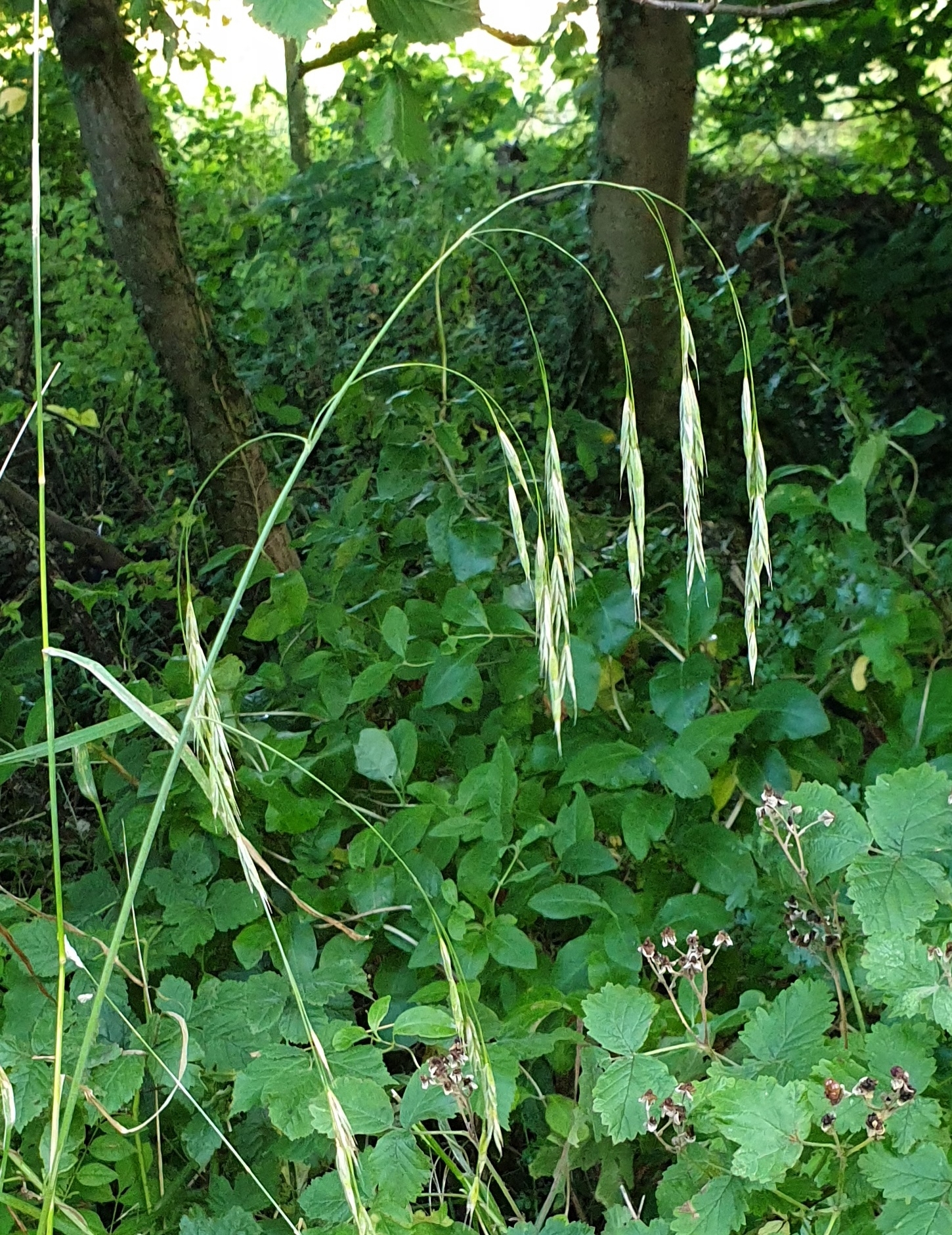

#17 False Brome
False Brome Brachypodium sylvaticum is one of our commonest woodland grasses and, thankfully, quite a distinctive plant. It is common to abundant in shaded woodlands, especially on steep wooded banks.
This is a tufted grass growing up to around 60 cm tall, making it shorter than Hairy-brome. It has hairy stems and flat, yellow-green leaves that narrow noticeably toward the base. The leaf colour is a useful identifying feature and often makes the plant easy to spot from a distance, particularly when cascading down a bank.
The leaf sheaths of False Brome are rounded and hairy, which might cause some confusion with Hairy-brome. However, the flowering structure sets it apart. In this species, the flower spike is initially upright, gradually arching as the spikelets mature. The spikelets are slender, elongated, and strongly overlapping along the central stem, while the lemmas are downy, each with a long awn reaching up to about 15 mm.
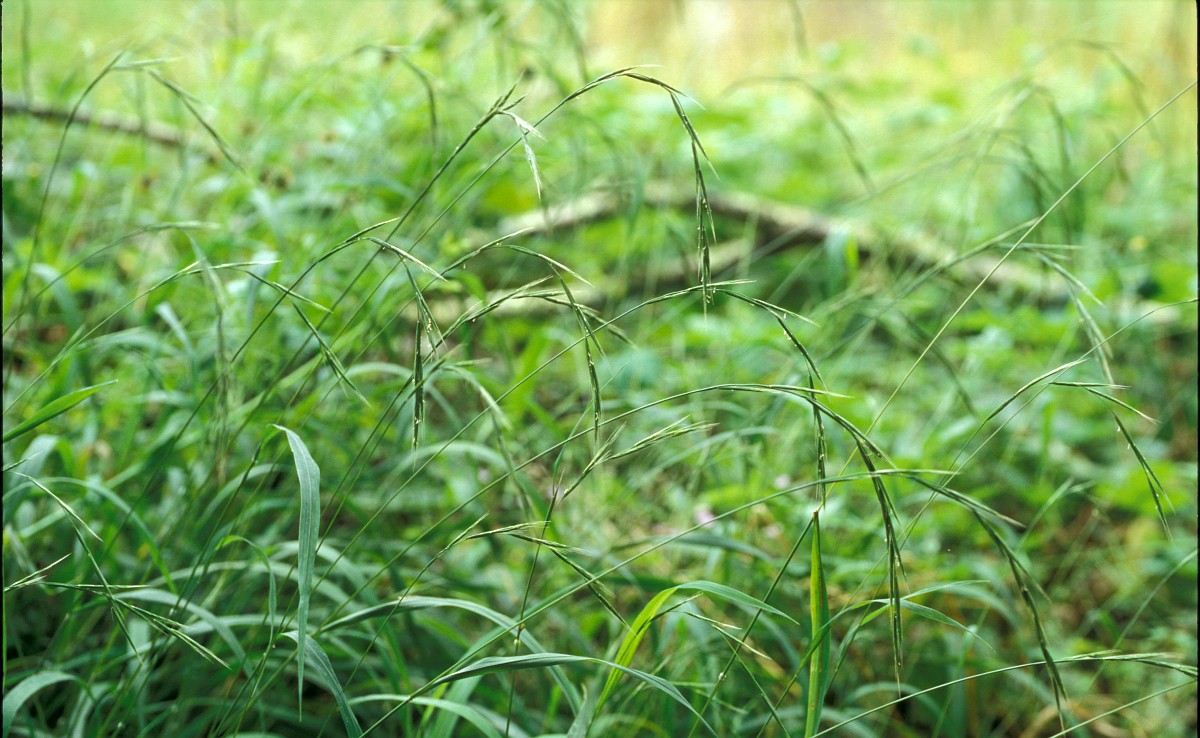

#18 Wood Millet
Now for an attractive and rather delicate grass: Wood Millet Milium effusum. In my experience, this species is somewhat less common than the previous two and is found mainly in well-managed woodland on damp soils, often along burns and small waterways. In North East England, it also serves as an indicator of ancient semi-natural woodland.
This is another rewarding species to identify, thanks to its tussock-forming habit and wide, flat, dull-green leaves that are clearly hairless. The leaf sheaths are rounded and smooth, in contrast to the hairy sheaths of the woodland bromes.
The flower spike is quite different from most other woodland grasses. It forms a loose, whorled, and spreading panicle that can reach up to 40 cm in length. The fine branches bear solitary spikelets which cluster toward the tips. The glumes – the outer parts of the spikelet – are almost as long as the spikelet itself and are green with a noticeably pale margin.
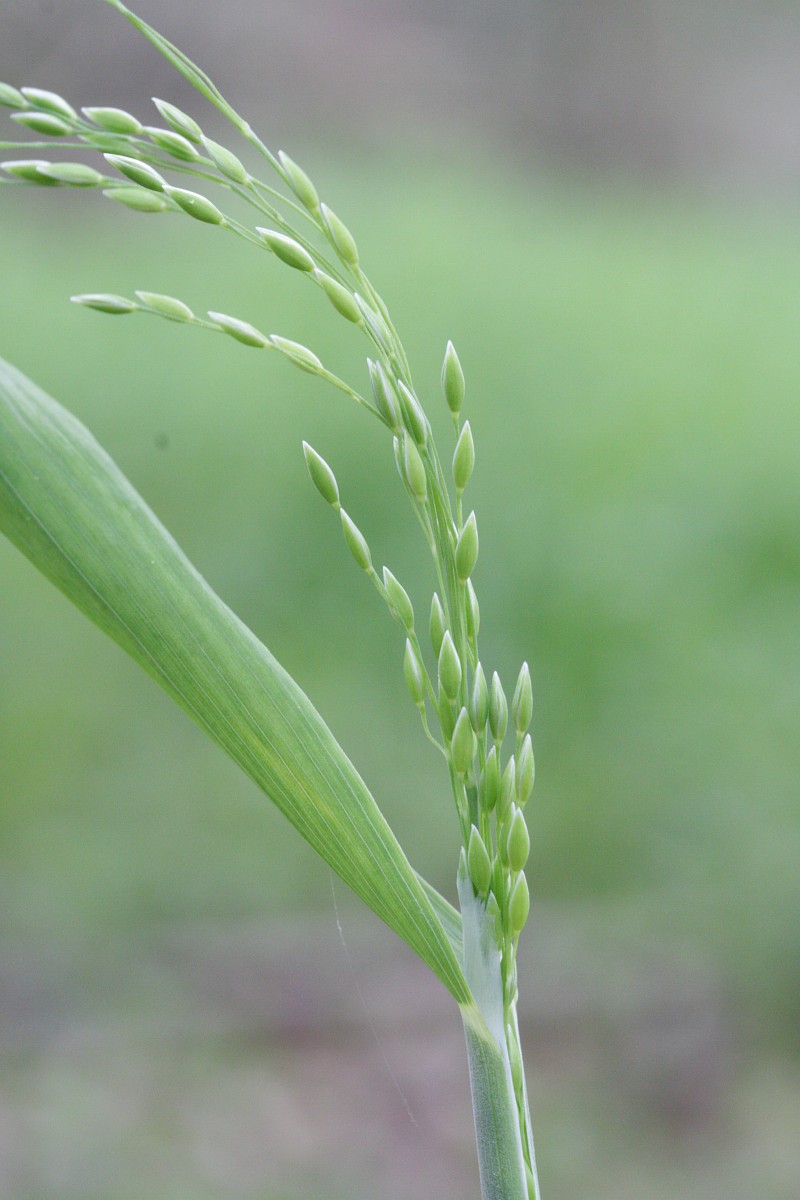
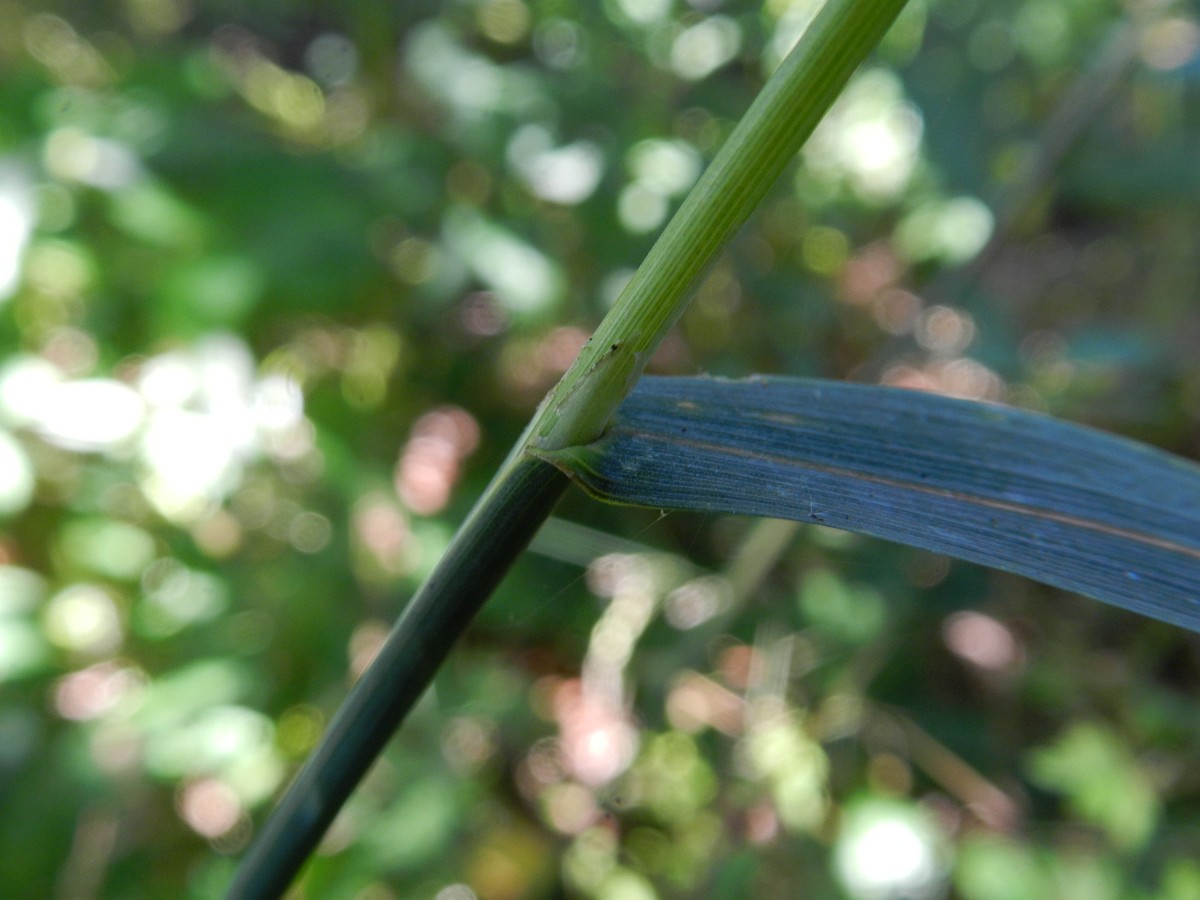
#19 Wood Melick
Wood Melick Melica uniflora is a dainty and distinctive little grass. Another indicator of ancient woodland, it is typically found on lighter soils in older woods where it spreads vegetatively to form dense colonies. The BSBI even suggests that most reproduction occurs in this way.
This is a relatively short grass, reaching up to around 60 cm in height. When in flower, it is unmistakable due to its graceful flower spikes, which bear only a few slender branches. The plant has relatively few spikelets, all clustered toward the tips of the branches, which small, rounded, and often show a purplish tinge, thanks to the glumes, which are nearly as long as the spikelet itself.
The leaves of Wood Melick are bright green, softly hairy, and pointed at the tip. The sheaths bear a long bristle on the side opposite the ligule, a helpful feature for distinguishing this species from the much rarer Mountain Melick Melica nutans, which also occurs in our region.
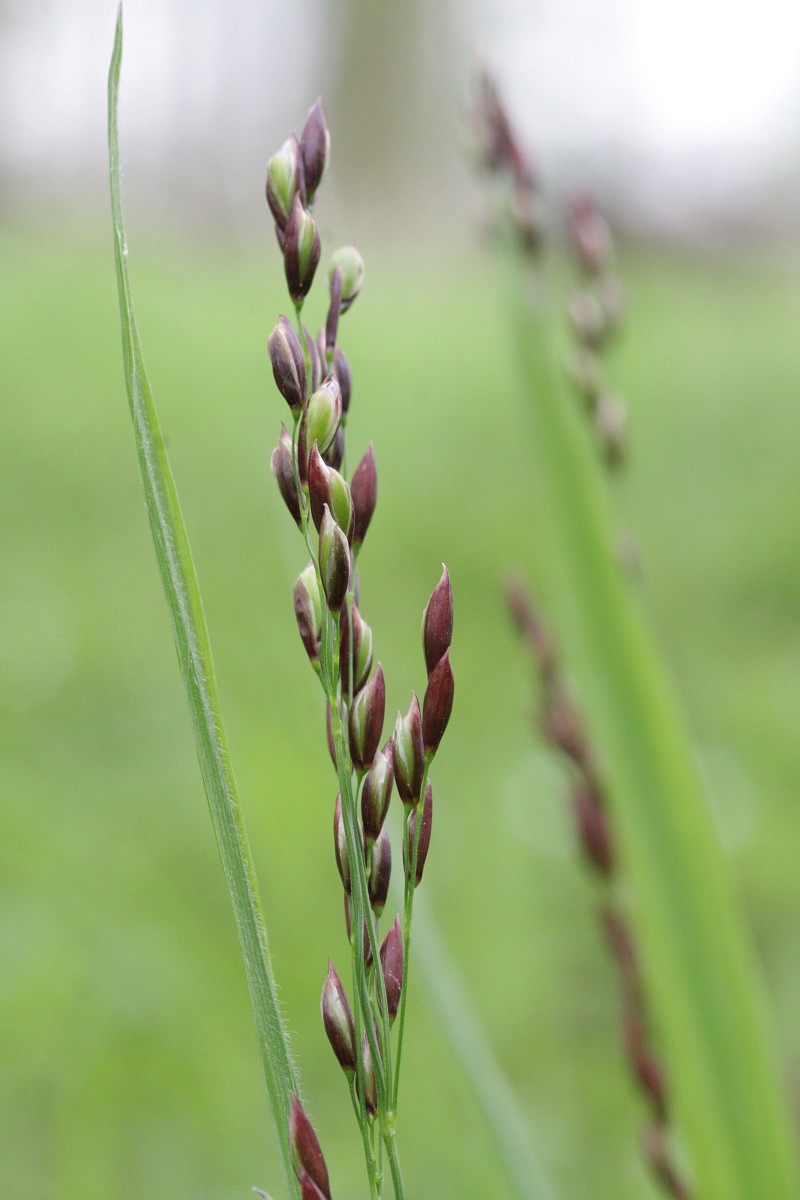
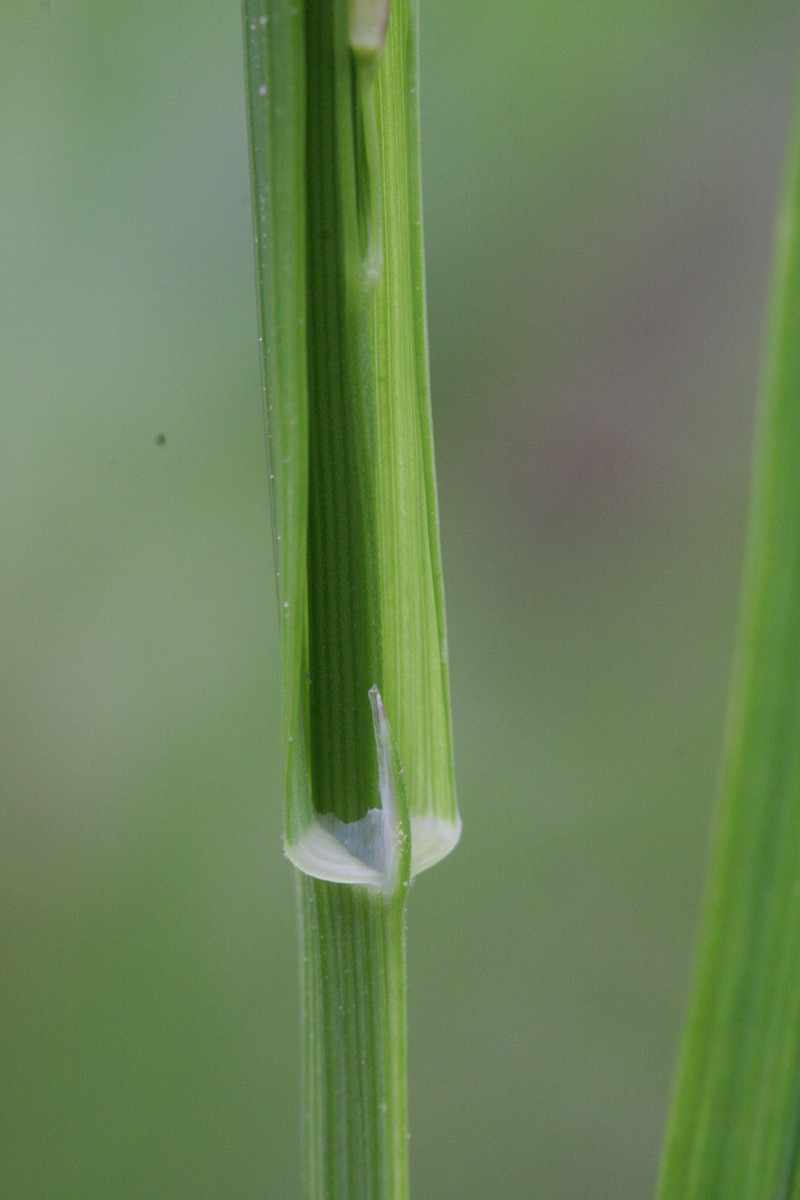
#20 Giant Fescue
The larger fescues are an interesting group to get to grips with. They typically have open panicles of flowers, with awned spikelets clustered toward the tips of wiry stems. Many species also feature distinctive auricles at the base of the leaves, which may provide useful clues for identification.
Giant Fescue Schedonorus giganteus is the only large fescue likely to be found with any regularity in North East woodlands. Other species do occur but are generally more localised and less abundant. It is is a species of damp soils in mature woodland and can reach heights of around 150 cm with open flower spikes bearing elongate spikelets with long, wavy awns.
The leaves are broad, glossy green, and hairless or only slightly hairy – their shine often making the plant easy to spot from a distance. The leaf sheaths are rounded, not fused around the stem, and end in two smooth, wing-like auricles. These are often tinged purple, making them a useful feature for field identification.
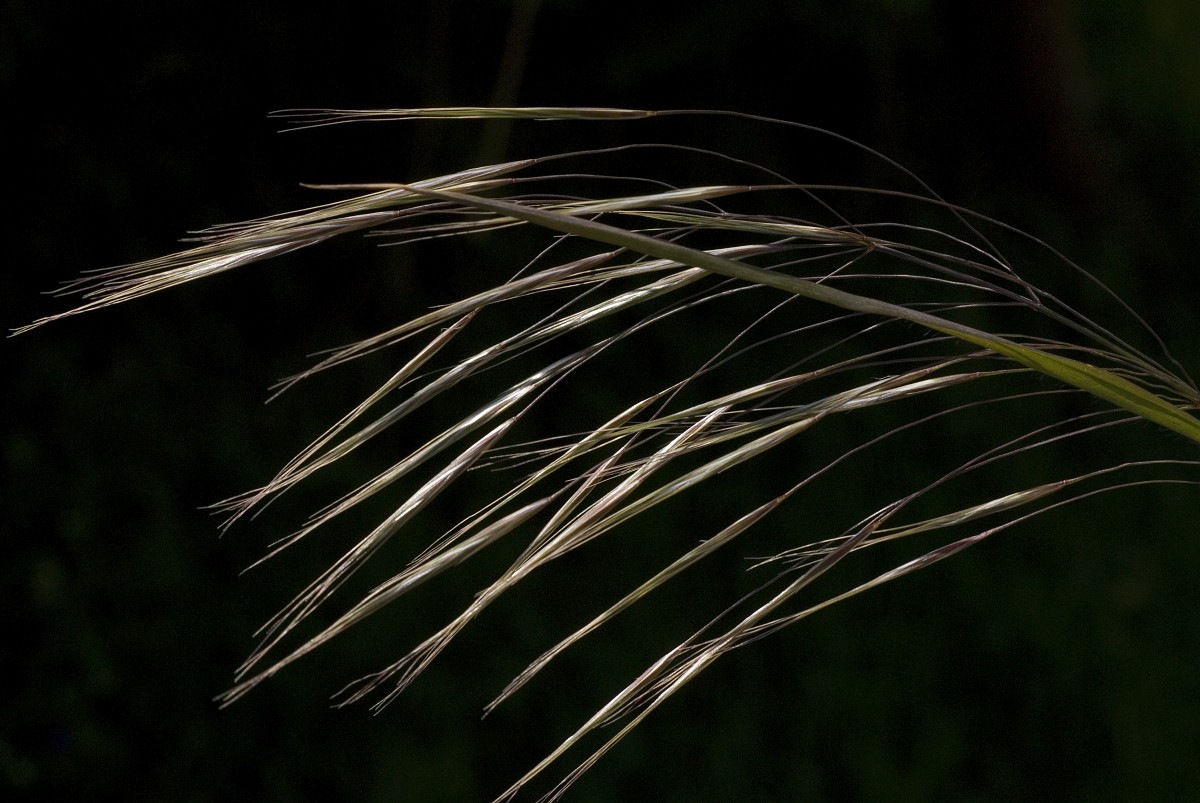
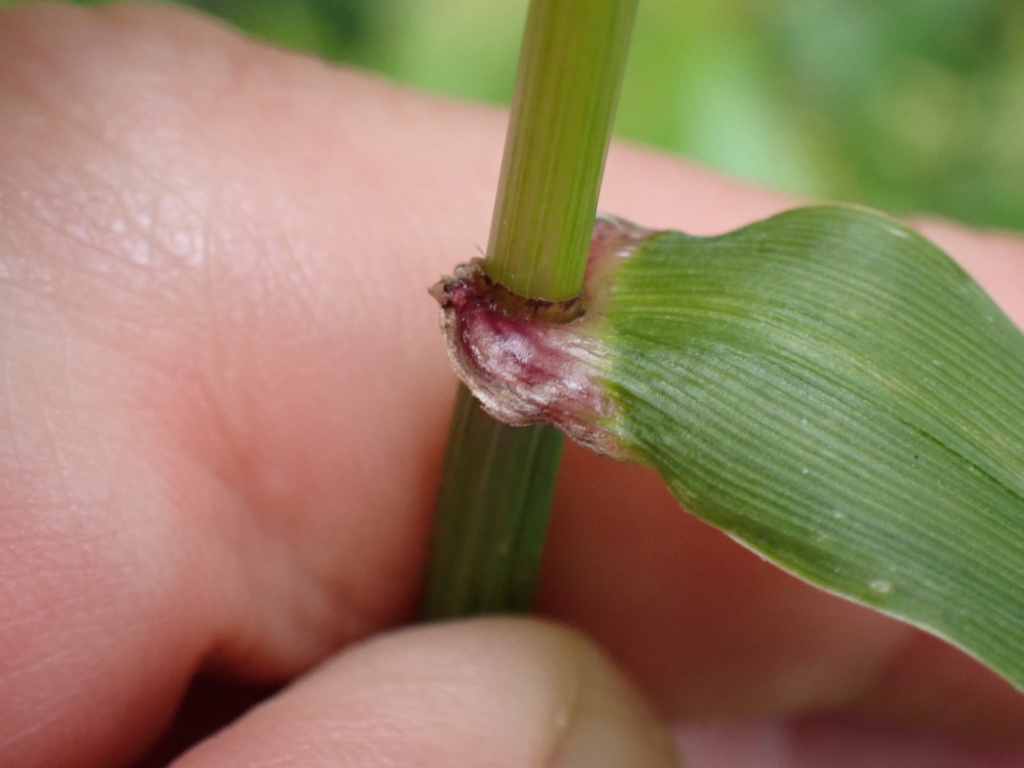
#21 Creeping Soft-grass
Creeping Soft-grass Holcus mollis is a common grass found in a wide range of habitats, though it can be particularly abundant in woodland settings. As mentioned previously, it closely resembles Yorkshire Fog Holcus lanatus but differs in one key feature: while Yorkshire Fog is hairy all over, this one has its hairs concentrated at the nodes – giving it what could be described as “hairy knees.”
With its pale, white-pink flowerheads, this species is easy to spot and is almost guaranteed to be in bloom if you visit a woodland this month.
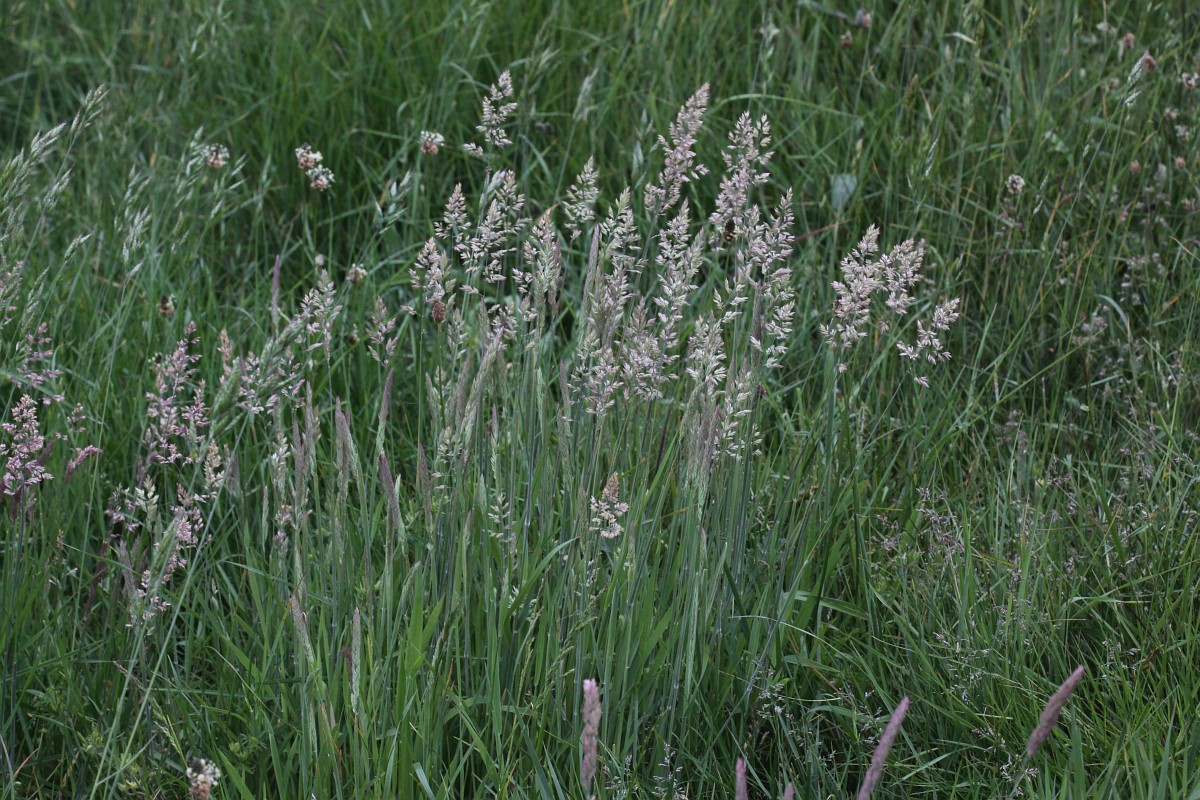
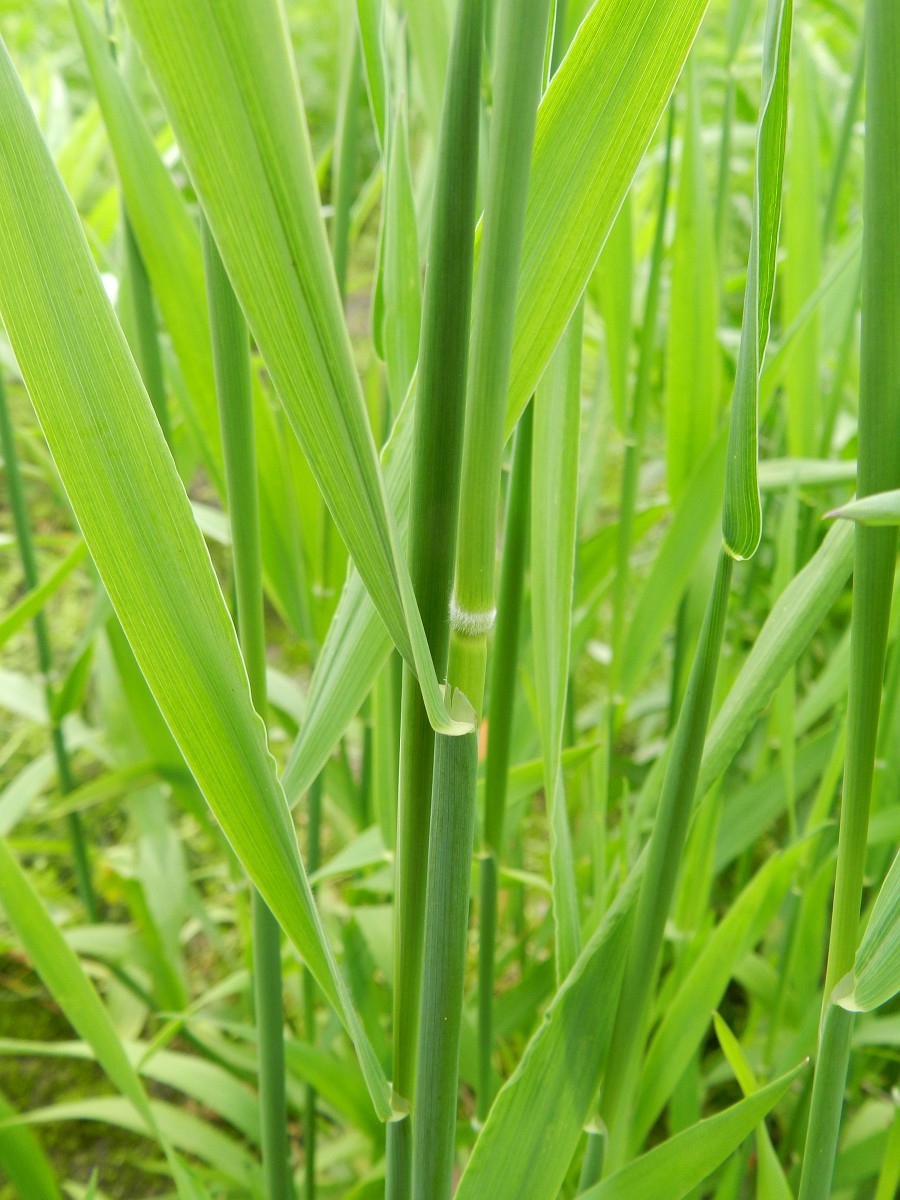
And that wraps up our look at woodland grasses. Of course, there are other species to be found in the region’s woodlands, but the ones featured here should provide a solid starting point if you decide to go exploring. If you come across a grass not mentioned in this post, it’s worth checking the other entries in this series – grasses do have a habit of turning up in unexpected places.
With 21 grass species covered so far, there are still a few more easy wins to round off the series. In our final two posts, we’ll take a look at grasses of arable land, as well as the common alien species you’re most likely to encounter in urban environments.